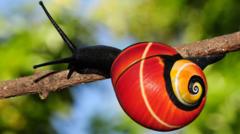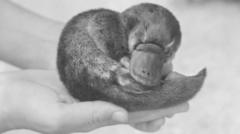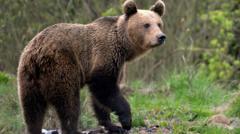Recent findings by the International Union for Conservation of Nature recognize four distinct species of giraffes, including the Southern, Reticulated, Northern, and Masai giraffes. This discovery, based on extensive genetic and morphological analysis, is set to reshape conservation initiatives aimed at safeguarding these majestic mammals.
New Research Identifies Four Distinct Giraffe Species, Enhancing Conservation Efforts

New Research Identifies Four Distinct Giraffe Species, Enhancing Conservation Efforts
Scientists reveal that the giraffe constitutes four separate species, indicating a need for tailored conservation strategies.
Giraffes, renowned for their towering height and unique appearance, were long believed to belong to a single species. However, new revelations from the International Union for Conservation of Nature (IUCN) indicate the existence of not just one, but four distinct species of giraffes. This significant development marks a turning point in understanding and conserving these beloved animals.
Scientists undertook a comprehensive study examining variations in skull size and head shape among different populations of giraffes. Their findings revealed substantial genetic diversity, confirming that these animals evolved separately across different regions of Africa. Geographic barriers such as deserts, rivers, and valleys have historically isolated these groups, leading them to diverge into separate species over time.
The study introduces three new species to the giraffe family tree. The Southern giraffe is one of them, inhabiting parts of South Africa, Angola, and surrounding countries. It has been separated from other giraffes by prominent geographic features, including the Kunene and Zambezi rivers.
Another newly recognized species is the Reticulated giraffe, primarily found in Kenya, Somalia, and Ethiopia. This giraffe species thrives in the savannas and wooded grasslands, with geographic barriers like the Tana River aiding its evolution.
Lastly, the Northern giraffe resides in western Ethiopia, central and western Kenya, eastern South Sudan, and Uganda. Migration patterns and the presence of the Nile River and Lake Victoria have contributed to its separation from the other giraffe species. The Masai giraffe, also classified in this study, is easily identifiable by its leaf-patterned coat and resides in Kenya, Tanzania, and Uganda.
This new classification holds vital implications for conservation efforts. As the IUCN notes, understanding genetic differences among giraffes is essential to enhancing conservation strategies. Previously viewed as one vulnerable species, each of the four identified species, along with their subspecies, will now undergo reassessment regarding their conservation status. The goal is to implement more effective management and protection measures for each unique giraffe population, ensuring their survival for future generations.




















